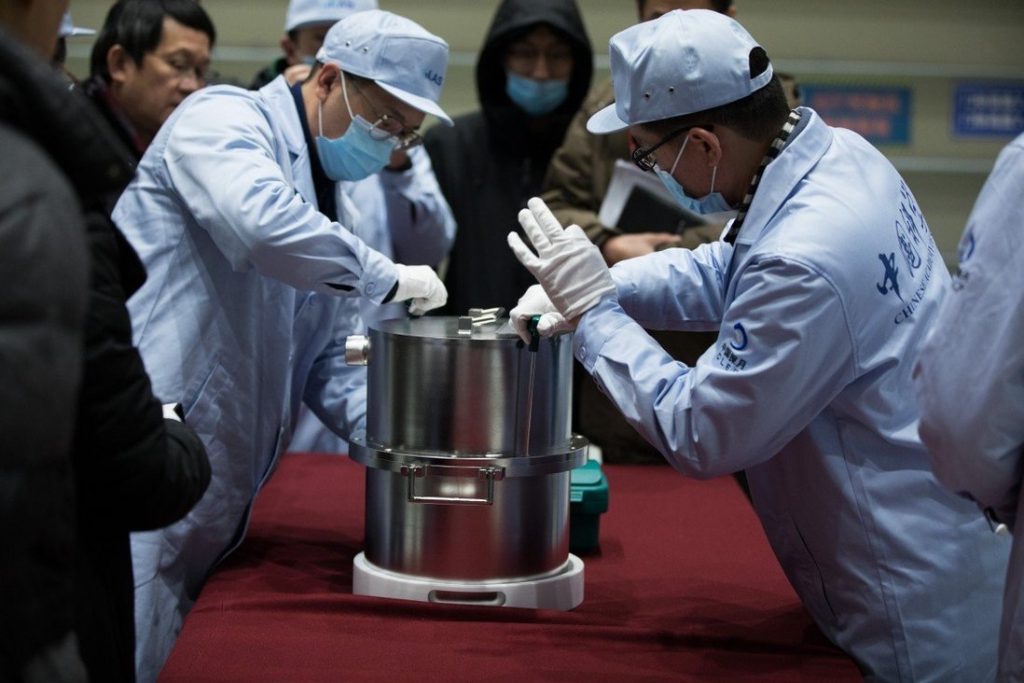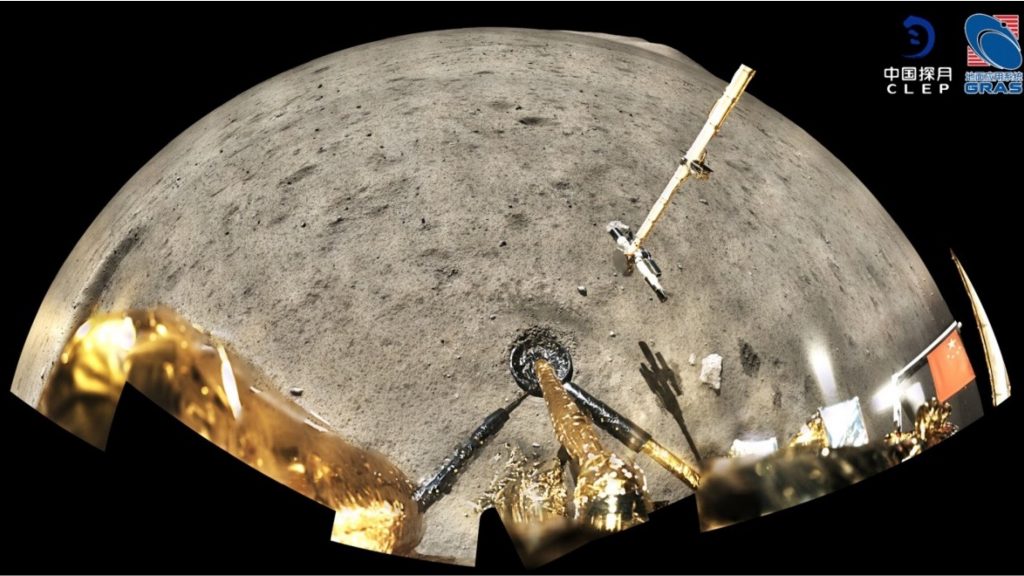If it’s from 1.97 billion years ago, will it be called the youngest or the oldest lunar material?!
Researchers from China, Australia, Sweden, and the U.S have been researching the samples of the Moon collected by the Chinese National Space Agency during the Change’e-5 mission. And it seems like the rocks collected during the expedition are from lava flowing on the surface of the moon soon billion years back.
Chang’e-5 was an uncrewed mission from China which consisted of a robotic ladder landing on the side of the Moon facing the Earth in December 2020. Chang’e-5’s goal was to find evidence of some of the youngest volcanic eruptions. The mission came back to Earth with 1.7 kilograms (3.7 pounds) of lunar rocks which were the first samples collected from the Moon since 1976.

The lunar material was analyzed using a sensitive high-resolution ion microprobe (SHRIMP) instrument at the SHRIMP Center in Beijing, China. While scientists have been able to predict the age of volcanic rocks by studying the number of impact craters on the lunar surface, it was not possible to confirm the calculation without examining actual samples which were only made possible recently.
In the beginning, the sample was sorted by manually picking out several tiny fragments of basalt (volcanic rock) which was then analyzed using the same analysis technique used for Apollo samples dating back to the 1970s. The scientists were then able to determine an eruption age for these lavas of 1.97 billion years, which is one billion years younger than any previously collected basaltic lava data from the Moon.

In order for volcanic eruptions to occur, heat is required on the inside of a planet to generate the molten material. In the case of the Moon, it is believed that the heat had been long lost before the eruptions 2 billion years ago. To figure out the exact triggering factor for the melting of the lava, scientists are analyzing the sample in detail and maybe one day, they’ll be able to answer the burning question (no pun intended)


